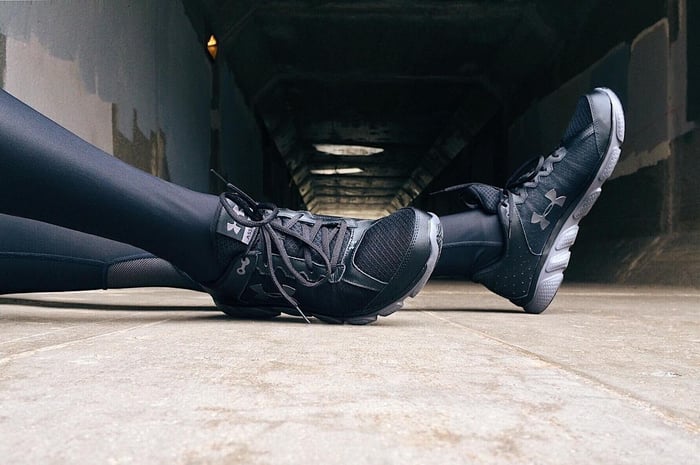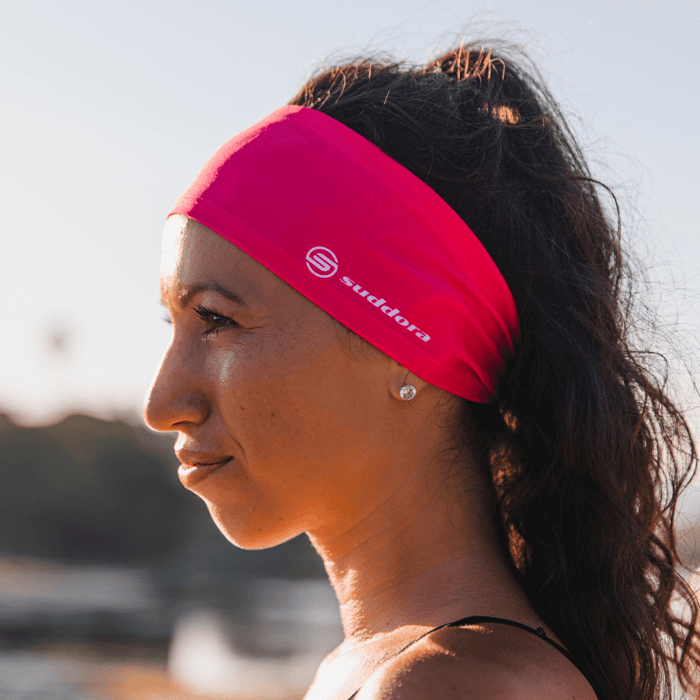The experience of running in cold weather can range from invigorating to downright miserable — but no matter what your feelings about the cold, there are many benefits to running during the winter months.
Running during the winter can help boost your immunity and metabolism, ward off seasonal depression, and keep winter weight gain at bay during what is typically the most sedentary time of year.
As you start the new year, January is the perfect time to get acquainted with jogging on chilly mornings. Winter running comes with its fair share of challenges, but this guide to cold-weather running can help. As a winter runner, it’s important to:
- Learn how to layer
- Dress with your body temperature in mind
- Use a balm on exposed skin
- Pick the right shoes
- Check the weather beforehand
- Run with a buddy
- Warm up well
- Check the weather
- Keep your heart rate steady throughout your workout
- Stay hydrated before and after your run
- Get inside quickly after your run
- Keep running
While pushing through the cold can be rewarding, it is important to know that — at a certain point — it can get too cold to run safely. Hypothermia, injury, frostbite, and an increased risk of heart events are real dangers posed by running outside in extreme weather.
When it is safe, take the proper precautions and preparation to make the most of your cold weather running:
Dress for Success
Learn How to Layer
When it comes to dressing for your winter jog, layering is key! Start with a base layer to help warm up your body enough for an effective run. Base layers include:
- Cold-weather tights or leggings. A great pair of winter leggings should protect your legs from exposure to cold temperatures, prevent overheating by allowing skin to breathe, and wick sweat for a comfortable running experience.
- Moisture-wicking tops and tees. Your base layer top should work overtime to wick sweat and keep your core warm as you run.
- Long underwear or long johns. Long underwear is the best way to keep warm all winter long. Look for long underwear designed specifically for exercise.
Once you’ve picked the perfect base layer, add additional layers accordingly depending on the weather outside.
Another essential element to successful layering is covering your hands and head, which can easily get uncomfortably cold during your workout. Pick out a pair of everyday gloves or activewear gloves to keep your hands warm. Make sure to include headwear such as a beanie or sports hat.
Another great option for keeping your head warm during a run is a running headband. Headbands for running in cold weather come in various styles — such as yoga, cotton, and non-slip. Running headbands are perfect for protecting your ears from nippy weather, keeping your hair pulled away from your face, and preventing sweat from dripping into your eyes, so you can focus on improving your time and your form and not your ability to see.
Suddora’s selection of workout headbands are perfect for people at any workout level, including those who want to run in the cold. Here's a list of some of the best headbands for running.
Dress With Body Temperature in Mind
While layering is important, keep in mind that your body temperature will rise significantly once you get moving. To avoid getting too hot and sweating excessively under your well-chosen layers, underdress — just a bit.
A great rule of thumb is dressing for about 15 to 20 degrees warmer than it is. This will keep you from overheating during your cold-weather workout. The exception is a windy day, on which you’ll want to layer to break the chill of the wind.
Use a Balm on Exposed Skin
Once the temperature drops to 5 degrees Fahrenheit or lower, you will be at risk for developing frostbite. Exposed skin on your ankles, hands, and face is particularly threatened by extreme temperatures.
Try to keep these areas covered with fabric whenever possible, but once you’ve layered up, any exposed sections should be protected with a winter balm or moisturizer.
Skincare for runners is an often overlooked part of preparation. Stock up on quality winter lotion to protect your skin during and after your outdoor exercise.
Pick the Right Shoes
The final piece of your cold-weather running outfit is an important one: shoes.
In an ideal world, you should try to run on a path that is clear of ice and snow. However, sometimes that is not an option. Therefore, it’s important to choose proper footwear that can get you through wintry run conditions.
Especially in snowy weather, it is important to pick shoes that have:
- Great traction. Slipping in the winter can lead to serious injury. As such, finding shoes with traction designed for winter terrain is essential for any cold-weather runner.
- Protection from the elements. A great winter running shoe should be water resistant to keep snow, slush, rain, and ice away from your feet.
- A little room for thick socks. When you’re shopping, keep in mind that you may want to leave room for thick winter socks to protect your toes from the elements.
It is a great idea to invest in a pair of winter running shoes, which often feature impressive traction and weatherproof materials. Complement your footwear choice with warm socks that will keep your feet dry as you run.
Run Smarter, Not Harder
Check the Weather
Before starting your run, it is a great idea to check the weather. Important factors that can impact your preparation or even deter you from running in the first place include:
- Wind speed and direction. Planning your route around wind direction can make for a much more effective and enjoyable winter workout.
- Incoming storms. If a storm is blowing in, reschedule your run for another day.
- Dangerous icy conditions. Be aware of icy conditions during a cold snap to avoid a fall or injury.
When planning your route, opt for smaller loops in your area versus a longer run and back. This will give you the option to drop off extraneous layers if you get too toasty or return home easily if the weather gets too treacherous or cold.
Run With a Buddy
Getting motivated to leave the warmth of your home for a frigid run can be challenging — even overwhelming — in the depths of winter. Setting up scheduled runs with a trusted running buddy can be a great way to stay consistent and inspired. Beyond the winter months, building a running routine with a friend has long-lasting benefits.
In the winter, it is important to include the caveat of canceling in the event of dangerously cold weather. Pick a cut-off temperature together and call off your run if the temperature dips below that number.
Warm-up Well
No matter what the weather, a pre-run warm-up is always essential for preventing injury. However, it is especially vital during the winter, when your muscles can be extra tight and lock up in the chill. Stiff joints and tight muscles can lead to injury or aggravate pain from overuse or old damage. A proper warm-up can save you pain and downtime later.
A good rule of thumb is to lengthen — or even double — your typical warm-up time. For instance, if your habit includes a five-minute warm-up, extend it to 10 or 15 minutes to prepare your body for a winter jog. Your goal should be to work up a light sweat before you even start your run. It is preferable to warm up inside, where your body has a chance to loosen safely before hitting the cold. If you plan on warming up outside, use layers to warm up your muscles and joints more quickly.
Whether you warm up inside or outside, make sure to use a full-body warm-up to properly prepare.
Keep Your Heart Rate Steady
Cold weather puts extra strain on your circulatory system. To keep your internal organs protected from the external chill, your heart must work harder any time you step out into the cold. Because of this, winter is not the time to push your heart rate during a run, especially if you have any heart conditions.
Avoid placing extra stress on your heart and blood vessels by staying in an appropriate aerobic zone. While it may feel slower than your summer speeds, it will still provide your body with the same health benefits — without added risk.
During the winter months avoid high-intensity interval training (HIIT) and excessive sprints outside, and keep your runs between 30 and 60 minutes. Unless you are an expert runner, the strain can impact your heart and immune system. Above all, listen to your body.
Finish Strong
Stay Hydrated
While you may not sweat as much during your wintry workout as your summer sessions, don’t forget to stay hydrated. Drinking water before, during, and after a run is essential year-round.
Get Inside
Once you finish your run, your body will cool off fast. Quickly get into a warm space once you stop running to keep your body healthy and avoid getting too cold too quickly.
Keep Running
There is no doubt about it: cold-weather running requires dedication. Not every run will be good — in fact, many will be miserable. However, the occasional magical moment of running among fresh snow, watching your breath create a fog in the air, or simply appreciating the joy of moving your body in the fresh air makes winter running worth the challenge.
If you’re ready to get out into the chill this winter, pick the perfect layers, running headband, and winter shoes and start running.





